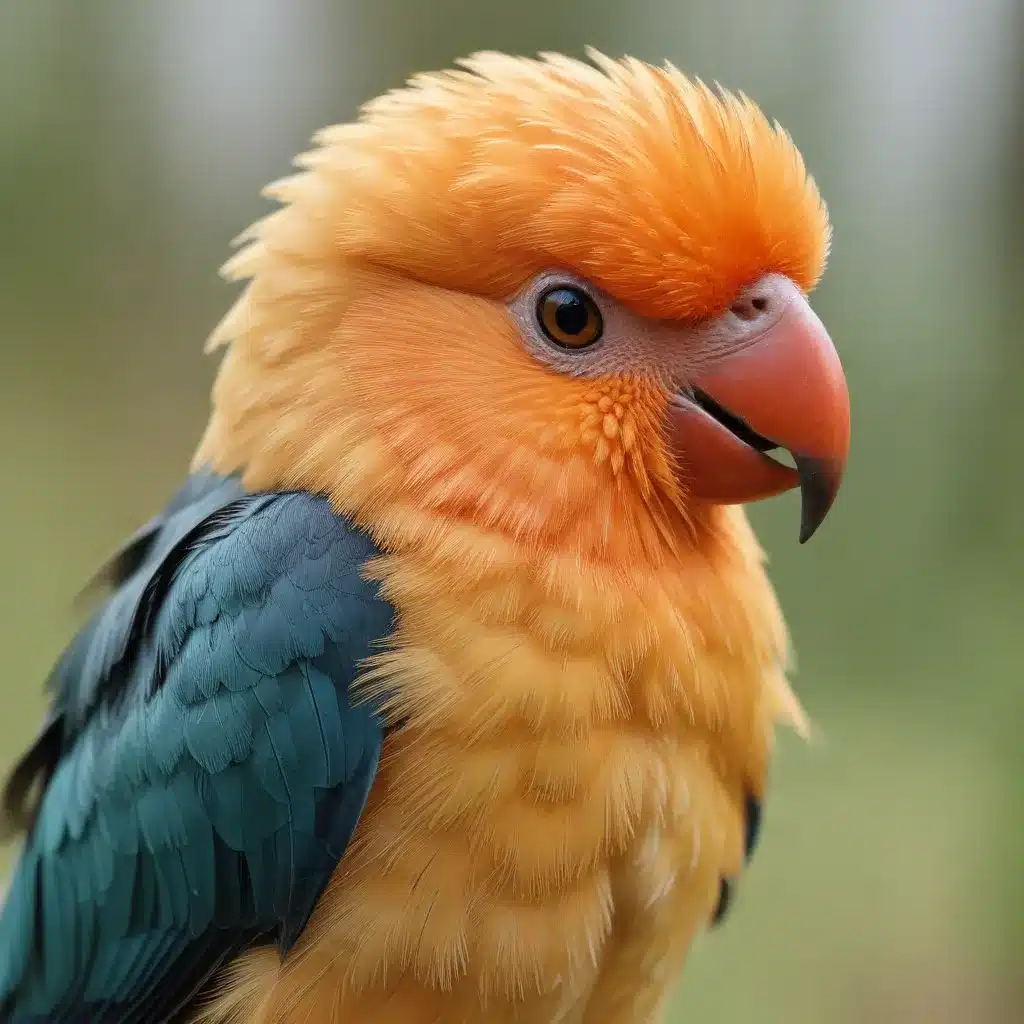
Avian Behavior and Welfare
As an experienced avian caretaker, I understand the unique behavioral adaptations and welfare considerations that come with rescuing or rehoming birds. Whether you’re bringing home a new parrot, finch, or cockatiel, it’s crucial to recognize the impact that past experiences can have on a bird’s behavior and emotional well-being.
Understanding Behavioral Adaptations
Birds in rescue or rehome situations often exhibit behaviors shaped by their previous living conditions. A formerly caged bird, for example, may display heightened anxiety or fear when first introduced to a new, more open environment. Conversely, a bird accustomed to living outdoors may struggle with the confined spaces of an indoor home. Recognizing these behavioral adaptations is the first step in tailoring your training approach to meet the bird’s individual needs.
Stress Mitigation Strategies
Minimizing stress is paramount when working with rescued or rehomed birds. Sudden changes, unfamiliar surroundings, and even well-intentioned training can trigger fear responses. Implementing gradual acclimation, providing a comfortable, enriched living space, and using positive reinforcement techniques can go a long way in helping birds feel safe and secure. Avoid rushing the process – patience and understanding are key.
Enrichment Techniques
Keeping rescued or rehomed birds mentally and physically stimulated is essential for their overall well-being. Incorporate a variety of foraging toys, perches of different textures, and opportunities for natural behaviors like climbing, flying, and social interaction. Regularly rotating enrichment items can prevent boredom and encourage exploration. Remember, each bird is unique, so experiment to discover their preferred activities.
Rehabilitation and Reintegration
Successful rehabilitation and reintegration of rescued or rehomed birds requires a comprehensive, multifaceted approach that addresses both their physical and psychological needs.
Physical and Psychological Assessments
Before beginning any training or rehabilitation program, it’s crucial to conduct a thorough assessment of the bird’s physical and psychological state. This may involve veterinary examinations, behavioral evaluations, and close observation to identify any underlying medical conditions, nutritional deficiencies, or trauma-related issues that may be impacting the bird’s behavior and well-being.
Acclimation to New Environments
Introducing a rescued or rehomed bird to a new living environment can be a delicate process. Start by providing a secure, comfortable, and species-appropriate enclosure, gradually expanding the bird’s access to the rest of the home as they become more confident and comfortable. Utilize familiar objects, scents, and routines to help ease the transition and minimize stress.
Transition to Forever Homes
When the time comes to place a rescued or rehomed bird in a forever home, it’s essential to work closely with the new caretakers to ensure a smooth transition. Provide detailed information about the bird’s history, behavior, and care requirements, and offer ongoing support and guidance as the bird adjusts to its new surroundings. Encouraging open communication and collaboration between the rescue organization and the adopting family can greatly enhance the bird’s chances of a successful and lasting placement.
Training Methodologies for Rescued Birds
Employing positive reinforcement-based training techniques is crucial when working with rescued or rehomed birds. These methods not only help build trust and confidence but also promote the bird’s natural problem-solving abilities and decision-making skills.
Positive Reinforcement Training
Positive reinforcement training, which rewards desired behaviors with treats, praise, or access to preferred activities, is an invaluable tool for rehabilitating and reintegrating rescued or rehomed birds. This approach helps birds associate positive experiences with training, making them more receptive to learning and less likely to develop fear or aggression.
Desensitization and Counterconditioning
For birds that have experienced trauma or developed phobias, a combination of desensitization and counterconditioning can be highly effective. Gradually exposing the bird to the source of their fear, while pairing it with positive reinforcement, can help them overcome their anxiety and develop a more positive association with the previously aversive stimulus.
Specialized Techniques for Different Species
While the core principles of positive reinforcement training remain the same, the specific techniques and considerations may vary depending on the species of bird. For example, parrots may require more interactive training sessions, while finches or canaries may respond better to passive conditioning approaches. Consulting with experienced avian trainers or behaviorists can help you develop a customized training plan that takes the bird’s unique needs and characteristics into account.
Nutrition and Healthcare Considerations
Proper nutrition and comprehensive veterinary care are essential for the successful rehabilitation and long-term well-being of rescued or rehomed birds.
Dietary Requirements for Rehabilitation
Birds emerging from rescue or rehome situations may have nutritional deficiencies or digestive issues that require specialized diets and supplements. Work closely with an avian veterinarian to develop a balanced feeding plan that addresses the bird’s individual needs, whether that’s transitioning to a more nutrient-dense pellet diet, incorporating fresh produce, or providing targeted supplements.
Veterinary Support and Medical Interventions
Routine veterinary checkups, preventative care, and prompt treatment of any underlying medical conditions are crucial for rescued or rehomed birds. Avian veterinarians can help identify and address issues related to malnutrition, parasites, injuries, or illness, ensuring the bird’s physical health is optimized to support their rehabilitation and reintegration.
Long-term Health Monitoring
Even after a rescued or rehomed bird has settled into their new forever home, it’s important to maintain vigilance in monitoring their health and well-being. Regular check-ins with an avian veterinarian, along with close observation of the bird’s behavior, appetite, and overall condition, can help detect any emerging issues and allow for proactive intervention.
By understanding the unique behavioral, training, and healthcare needs of rescued or rehomed birds, you can help them overcome the challenges they’ve faced and thrive in their new forever homes. With patience, dedication, and a compassionate, positive-reinforcement-based approach, these resilient birds can go on to lead happy, healthy, and fulfilling lives.


